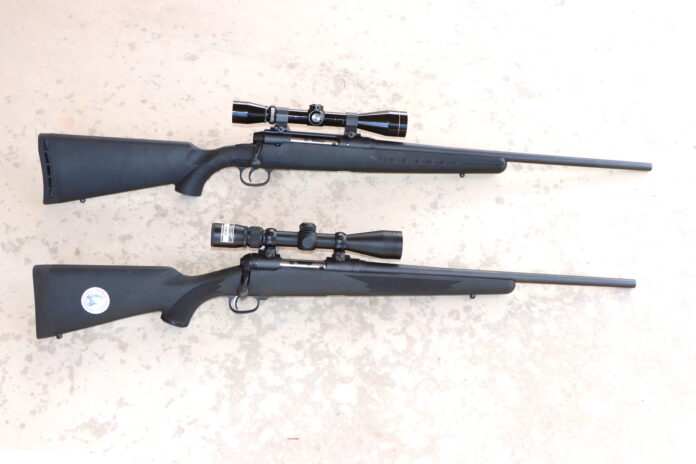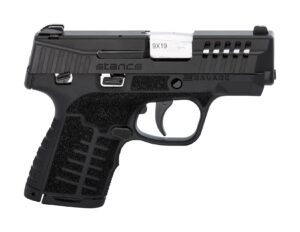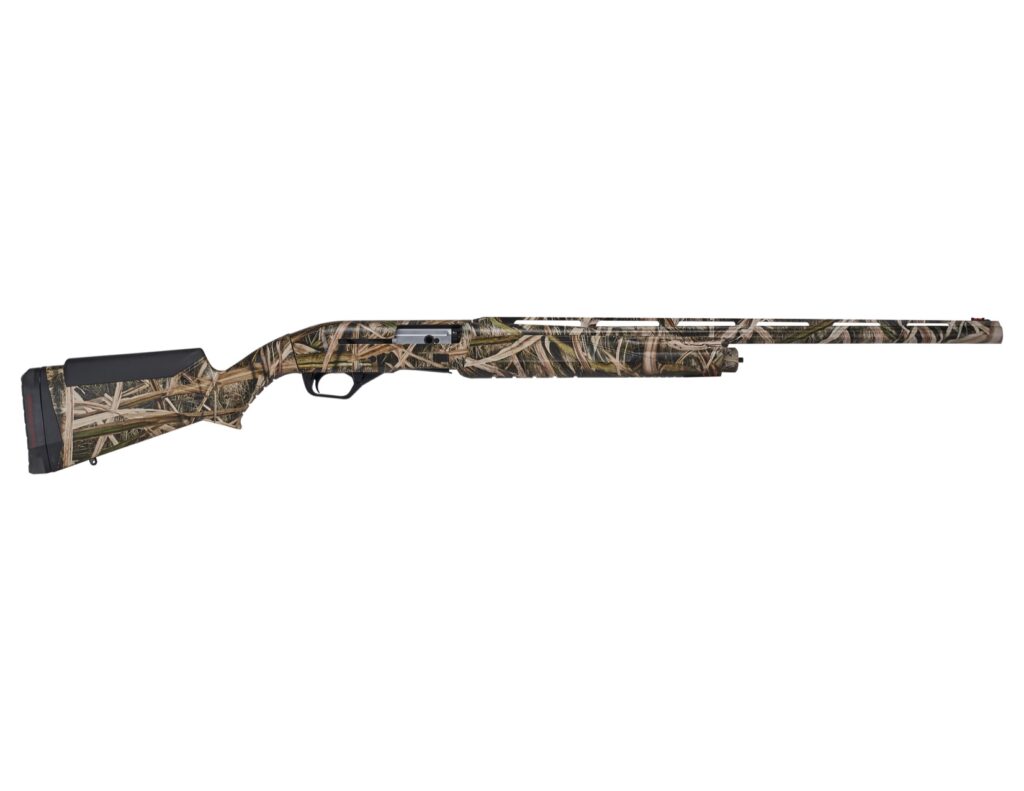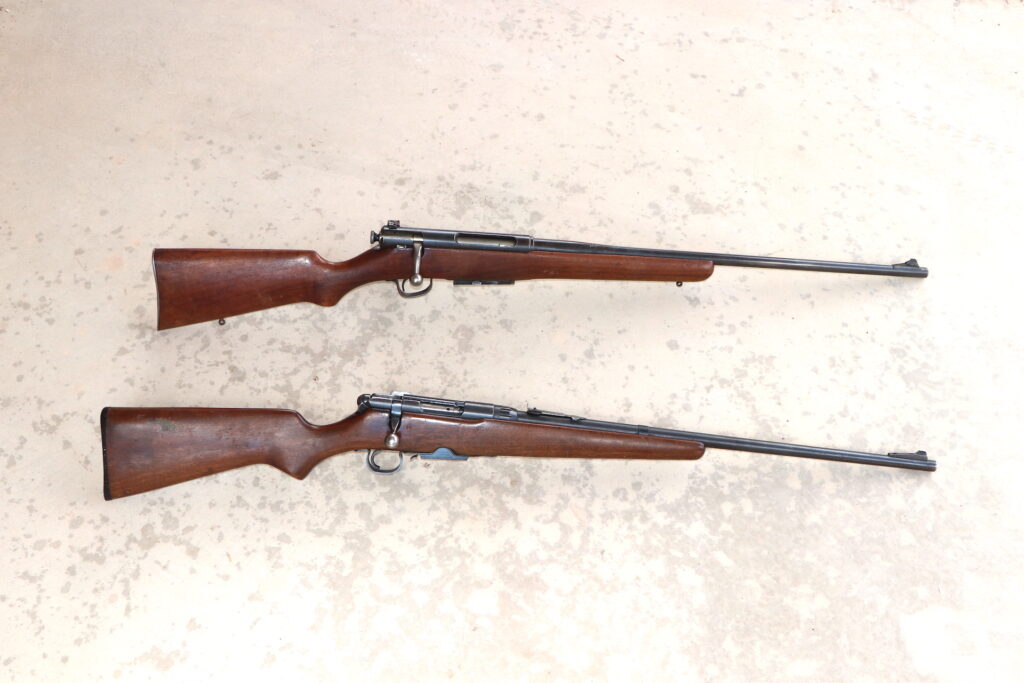
BY STEVE COMUS
Savage is one of the most recognizable names in all of Gundom for two reasons: It has been in business since Arthur Savage founded it in 1894 in Utica, New York (it is now headquartered in Westfield, Massachusetts) and because it is one of the most prolific gunmakers in the country. This is consistent with its corporate vision: To be the most widely used firearms in the world.
Although there have been really high-grade Savage arms made over the years, the company is famous for making reliable “working” guns that most folks can afford. That’s important.
Savage markets rifles, shotguns and handguns. Of their centerfire rifles, dominant is the flagship Model 110 line (the 110 variants are long action designs, while the sibling 10 designation indicates short action). Their Axis line comes in at a slightly lower price point.

In their extensive shotgun line of single-shots, pumps, semi-autos and over/unders, the Renegauge semi-auto stands out as an advanced design. Their line of Stance 9mm semi-auto handguns fits well into today’s self-defense market.
In recent years I have been introducing a rather steady stream of newcomers to shooting and hunting. When it comes time for them to begin shooting deer rifles, I keep at hand an assortment of different rifles, including a Savage Model 10 youth model and a full-size Axis, both chambered for .308 Winchester. That way, whether they are big or small, there is a handy rifle to fit.
The reasons I opted for those two specific rifles is that they are rugged enough to hold up, even when the newbies handle them less than delicately, they are accurate (sub-MOA with good factory fodder and my own handloads) and the .308 doesn’t intimidate them. Also, the new shooters are able to see firsthand what some of the handling differences are between smaller, lighter rifles and their full-bodied counterparts. How a hunting rifle handles for the individual hunter is important.
Since I have been using those rifles for instruction, some of the new shooters have purchased the same models for themselves as they begin their hunting careers. It is fulfilling when they tell me of their successes. I figure it is the duty of all hunters to pass on the traditions and culture of the hunt because that’s what’s kept those values alive since the beginning of time.
I am heartened with the generation which is now teenagers. As they learn to respect the animals they hunt, they also develop more respect for themselves and others. It hasn’t been that way with some recent generations. This new crop is destined to keep both hunting and shooting alive. That feels good. Perhaps there is more to the recent spike in gun sales than simply a pandemic or political intimidation as some are want to suggest?
When I think back, it is not surprising that I have been using Savage and Stevens rifles, shotguns and handguns since the beginning of my time in the woods, fields and mountains. For those not up-to-speed, Stevens was founded in Chicopee, Massachusetts in 1864 by Joshua Stevens. Stevens Arms was purchased by Savage in 1920 and Savage dropped the Stevens brand in 1991, only to revive it in 1999. Savage now markets both brands.
But I digress. Although I started bowhunting in 1949 and under the tutelage of Fred Bear into the ‘50s, I hunted small game with a .22 almost from the beginning. That first rifle was a Stevens Favorite falling block .22 that I bought used from a neighbor for $2, which represented a lot of discarded and then redeemed 2-cent empty soda and beer bottles I picked up from along the local highway. I bought Federal ammo for it, by the single round, at the local gas station.
As I evolved into big game hunting, I used a variety of rifles, including several Savage Model 99 lever-action models (first one in .30/30 Win., second one in .300 Savage and the third in .250 Savage). Savage had been making he 110 line for a long time before I “made” my own at the Massachusetts factory.
Ron Coburn, who headed Savage at the time, invited a number of scribes to visit the manufacturing facilities and, during the journey, to put together their “dream” rifle — with the oversight of the folks there who actually knew what they were doing. Most opted for something radical. I assembled a stainless steel and shiny wood .30-06 that shot one-inch groups at 200 yards and claimed a nice deer on its first hunt.

When it came time for something bigger, I included a Savage 116 in .375 H&H Mag with Accubrake. The Accubrake is interesting in that the hunter can twist it to turn it on or off, with no change in bullet placement. That way, the brake can help minimize felt recoil while practicing and then be turned off for the hunt itself. That way, there is no need to have hearing protection on the hunt itself, which can be important when the critters are big and mean.
During my handgun hunting phase, Savage came out with the Striker bolt-action handgun. Mine is chambered for the .308 Winchester and has performed admirably in the field. Recently, Savage has introduced the 110 PCS bolt-action centerfire pistol. It looks to be an improvement over the Striker, but I have not yet had an opportunity to check out the 110 PCS.
Over the years, I have used a host of other Savage/Stevens models for both hunting and shooting. The Savage Model 19 .22 was a fun target rifle until I lost the rear sight and I shot my .410/.22 over/under so much that the firing pin for the .22 barrel was peened so much that now it only hits the primer lightly. Or, what about the Stevens 520 shotgun that I used for duck hunting in Mexico?
As I think back over the years, it is obvious that I have a lot of memories that I would not have absent Savage and Stevens firearms. Hence, those brands have played a significant role in my personal hunting career. That’s nice, and it ain’t over ‘til it’s over. Bang, bang.




